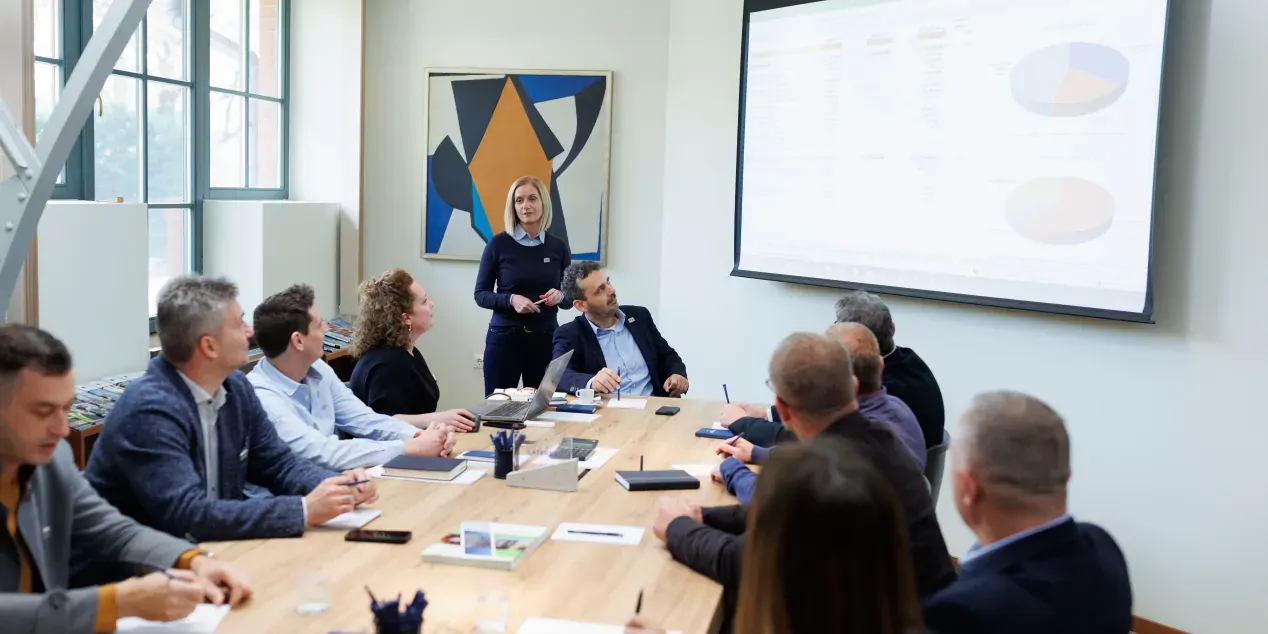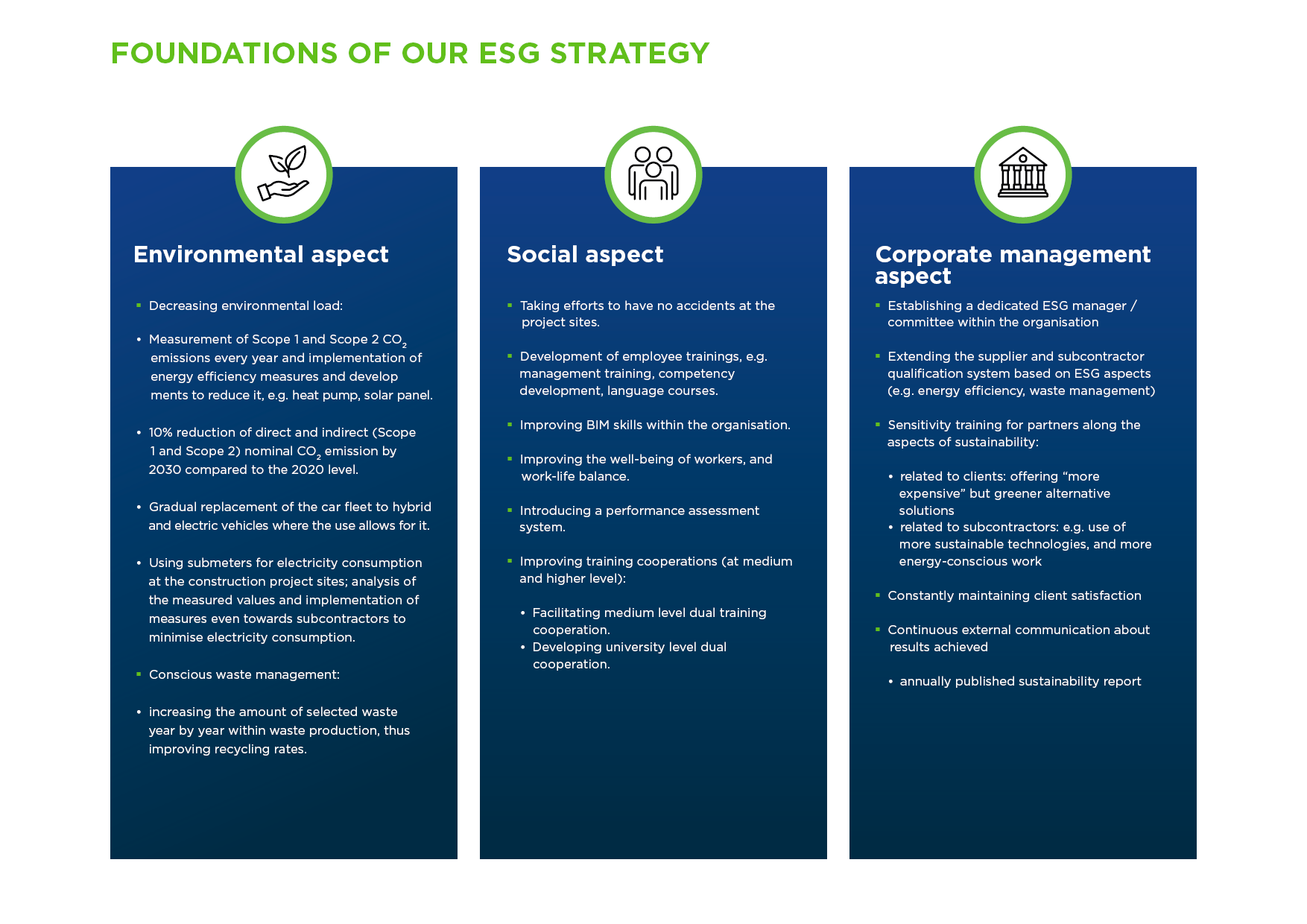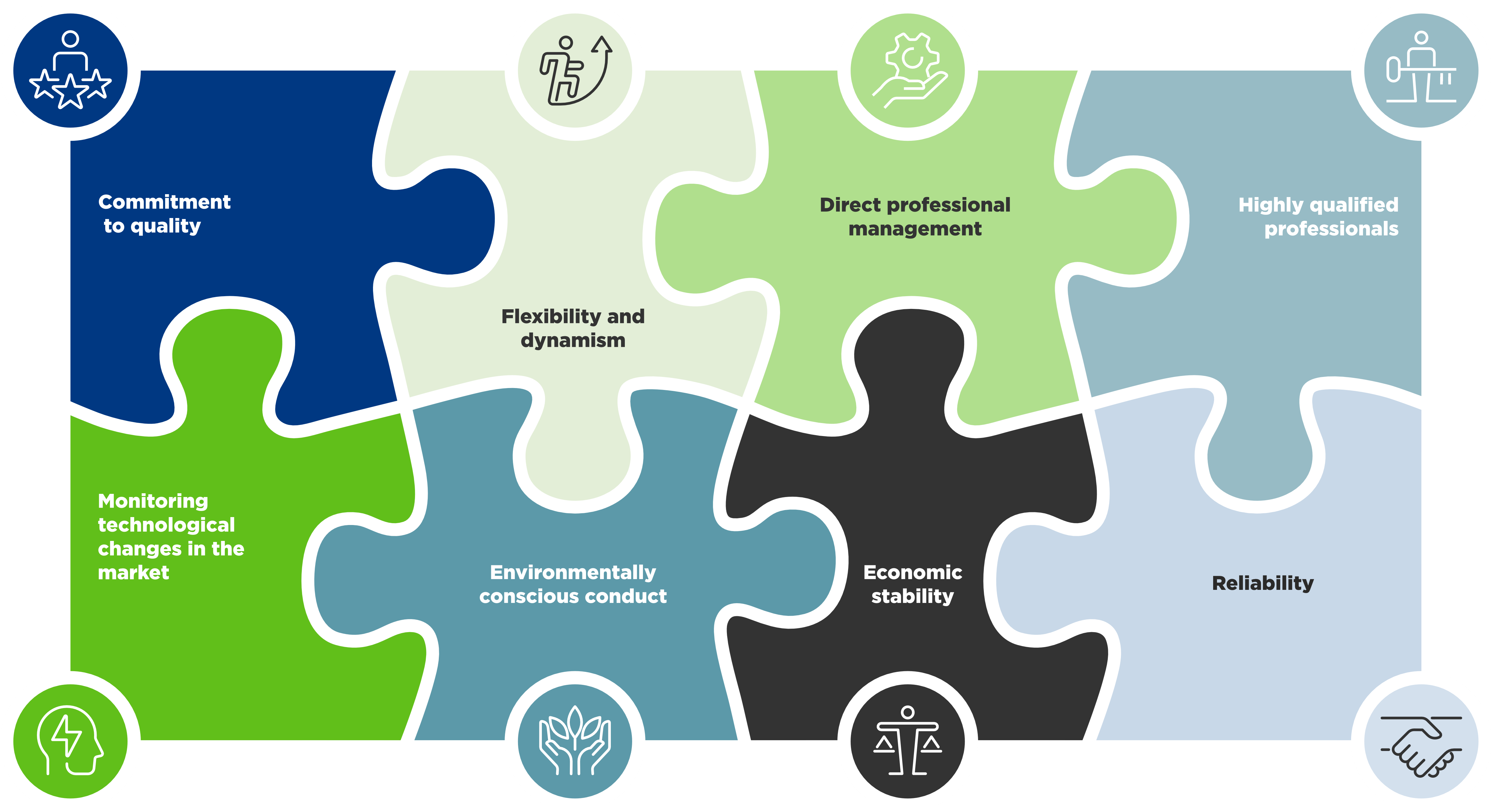Key features of our sustainable operations
- Commitment to quality
- Flexibility and dynamism
- Direct professional management
- Highly qualified professionals
- Monitoring technological changes in the market
- Environmentally conscious conduct
- Economic stability
- Reliability

ESG Social Responsibility
|
ESG (Environment, Social, Governance) is also making its way into the life of our company under the umbrella of sustainability and social responsibility. Our company is committed to doing business not only from an economic perspective, but also in a sustainable way that respects our employees, the environment and society. Sustainability and creating social value are at the heart of our activities. In addition to profit, the environmental impact is becoming an increasingly important factor influencing our company's decisions. We have defined our sustainability strategy and the directions and principles that will guide it. |
|
ENVIRONMENT The construction industry has a significant impact on the environment, for example in terms of resource use, energy efficiency, greenhouse gas emissions from buildings and waste management. We are committed to sustainable architecture. Our environmental goal is to save energy, to take a preventive approach to waste management and to increase the proportion of recycled waste. We aim to minimise the amount of hazardous waste generated. |
|
|
SOCIAL ASPECTS This means ensuring safe working conditions, equal opportunities, cooperation with local communities and supporting the local economy. We provide support in areas that are important to us, such as sports, healthy lifestyles and culture, as far as we can. We provide our staff with a range of extra benefits to help them relax and achieve their personal goals. |
|
|
|
GOVERNANCE Transparency, responsible decision-making and sustainability guidelines are part of our strategy. We aim to contribute to reducing the ecological footprint of the construction industry. This requires energy-efficient buildings, the use of recycled materials and the application of energy-saving technologies. Instead of quantity, we support quality and the respect and protection of natural values. We are constantly seeking for new opportunities, developing our equipment and introduce innovative processes in order to have the smallest possible ecological footprint. |
ESG Strategy
We arrived to the decision by 2022 to conclude the foundations of our business strategy along which we have been operating in a uniform ESG report clearly presenting our sustainability goals and initiatives and make these transparent for everyone. This is how our first report was prepared in which the current situation is drawn up on the one hand and our medium- and long-term objectives and initiatives are formulated on the other for an even greener and more conscious operation because we know that we are at the beginning of the way but we aim to improve year by year.
Our plan until 2030 identifies clear objectives for our sustainable development. We aim to create value together with our related stakeholders let them be our colleagues, clients, suppliers, cooperating partners or any member of our society. In addition to all this we find it important to not only do our jobs but stepping over the minimum requirements of providing information and relating to regulations, we also communicate these actively.

ESG approach


